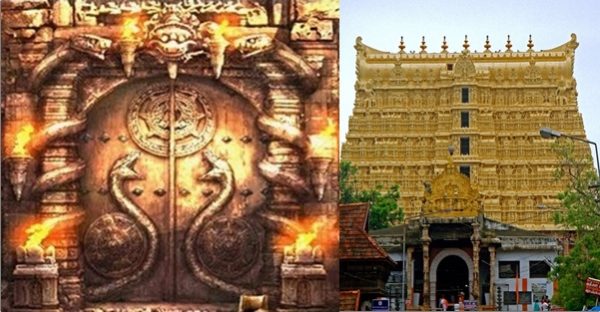New Delhi: The Supreme Court Monday favoured the erstwhile Travancore Royal family for the general administration and control of the Padmanabha Swamy temple in Kerala.
Bringing a closure on the dispute that has been running for nine long years, the apex court overturned the January 2011 judgment of the Kerala high court which had ruled that the state government should take over the management and control of the temple
“Great God’s will prevailed. Will say more about it after going through the whole verdict, said Princess Gowri Lakshmibai of the erstwhile Travancore royal family soon after the judgment.
Devotees thronged the sixth century temple with sweets situated in the heart of the state capital Thiruvananthapuram. Some devotees were even seen getting emotional and crying before the temple. The Kerala state government welcomed the historic verdict.
When did the temple shoot into limelight?
The temple shot into limelight after the top court in May 2011 ordered a detailed inventory probe of the articles in the temple vaults which had long rumoured to be holding great wealth.
When five its six vaults, known as ‘Kallara’ in Malayalam, were opened in line with the court order, vast treasure of gold chests and other valuables were discovered. It was estimated that the intrinsic value of the treasure amounted to more than Rs 90,000 crore. One of the vaults, Kallara B could not be opened and the opening of the same was later kept in abeyance by the apex court.
In August 2012, senior advocate Gopal Subramanium was appointed Amicus Curiae (friend of the court) by the Supreme Court. Subramanium submitted a voluminous report before the court in April 2014 alleging serious mismanagement of the temple by the trust and indicting the royal family on various counts.
The temple was under the control of a trust headed by the ex-royals’ family until April 2014 when the top court by way of a crucial interim order handed over its management to a four-member administrative committee headed by a district judge.
The legal genesis of the dispute lies in the agreement of accession (agreement) signed between the Kings of Travancore with the Government of India in 1949 by which the princely state of Travancore became a part of the Indian Union.
Article VII of the agreement provided that administration of the Padmanabha Swamy temple shall be conducted, subject to the control and supervision of the ruler of Travancore, by an executive officer appointed by the ruler.
PNN/Agencies
